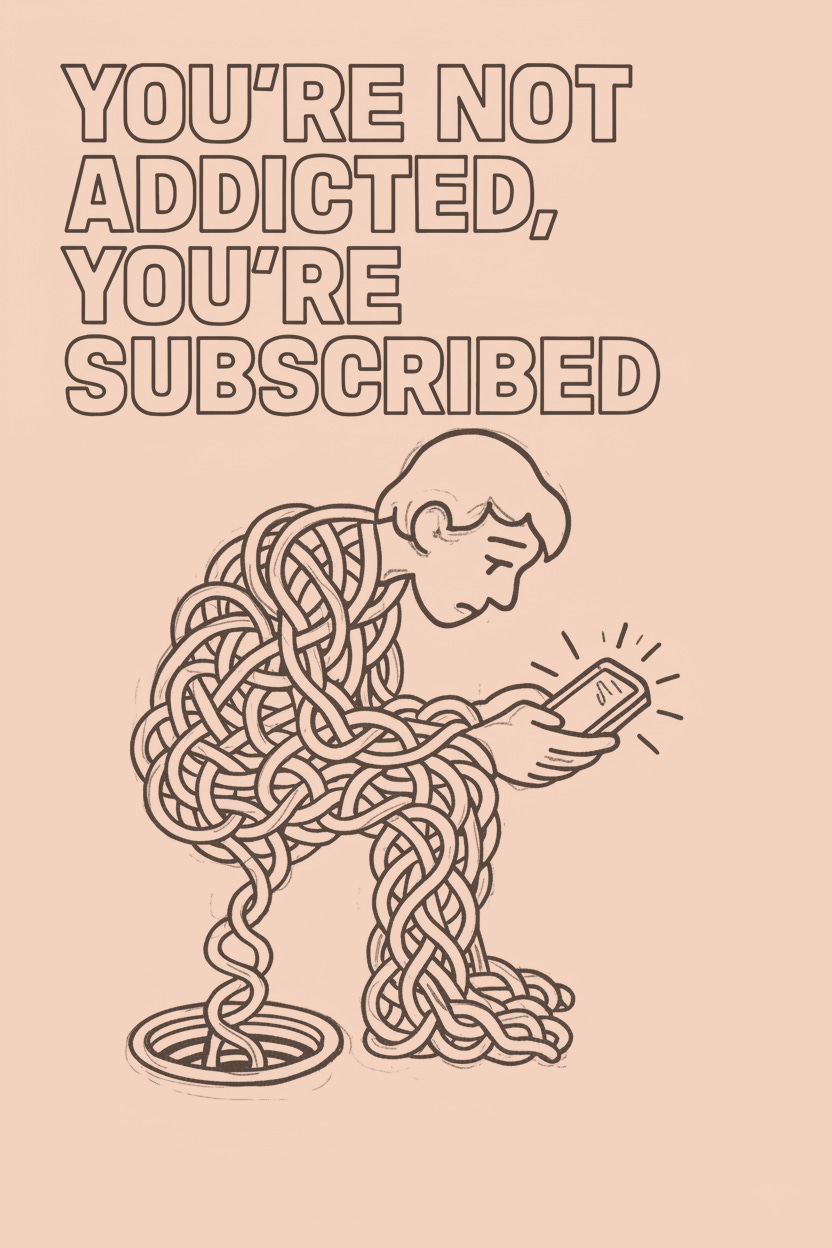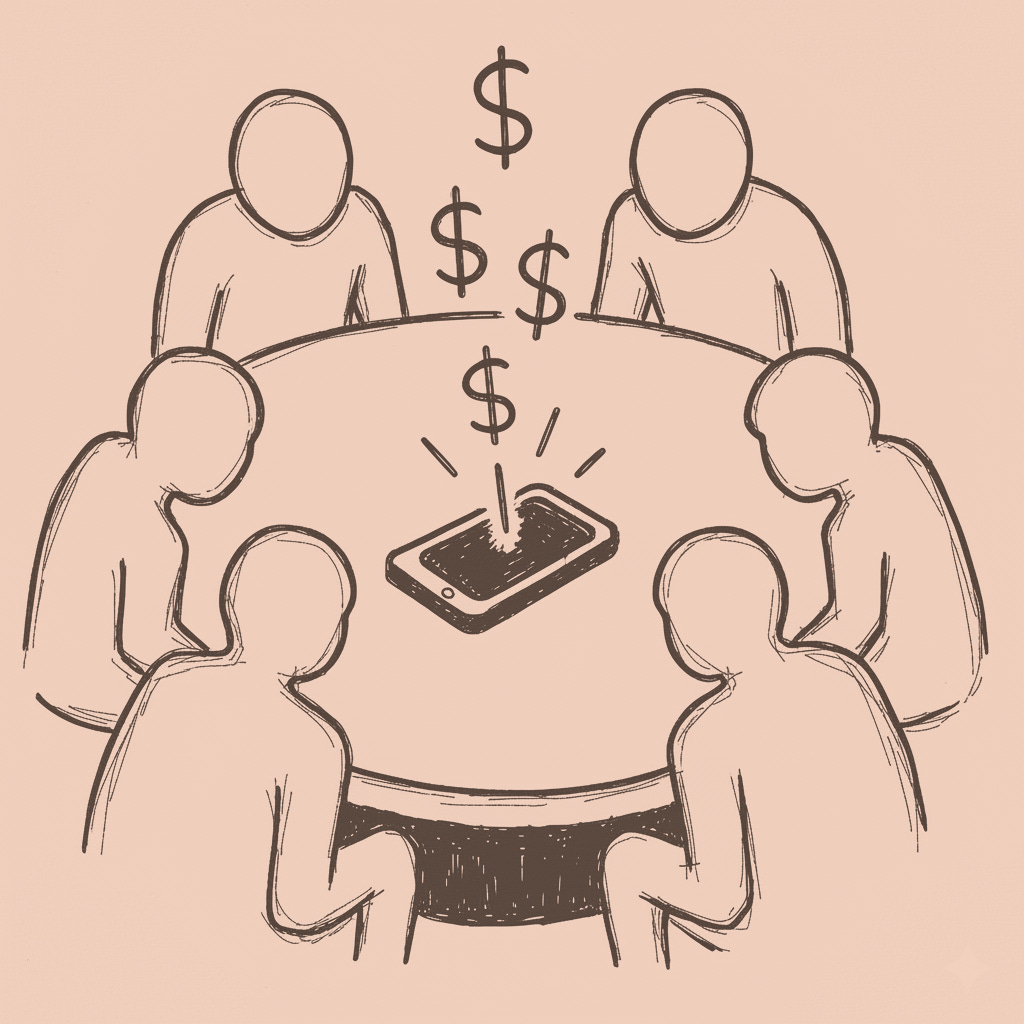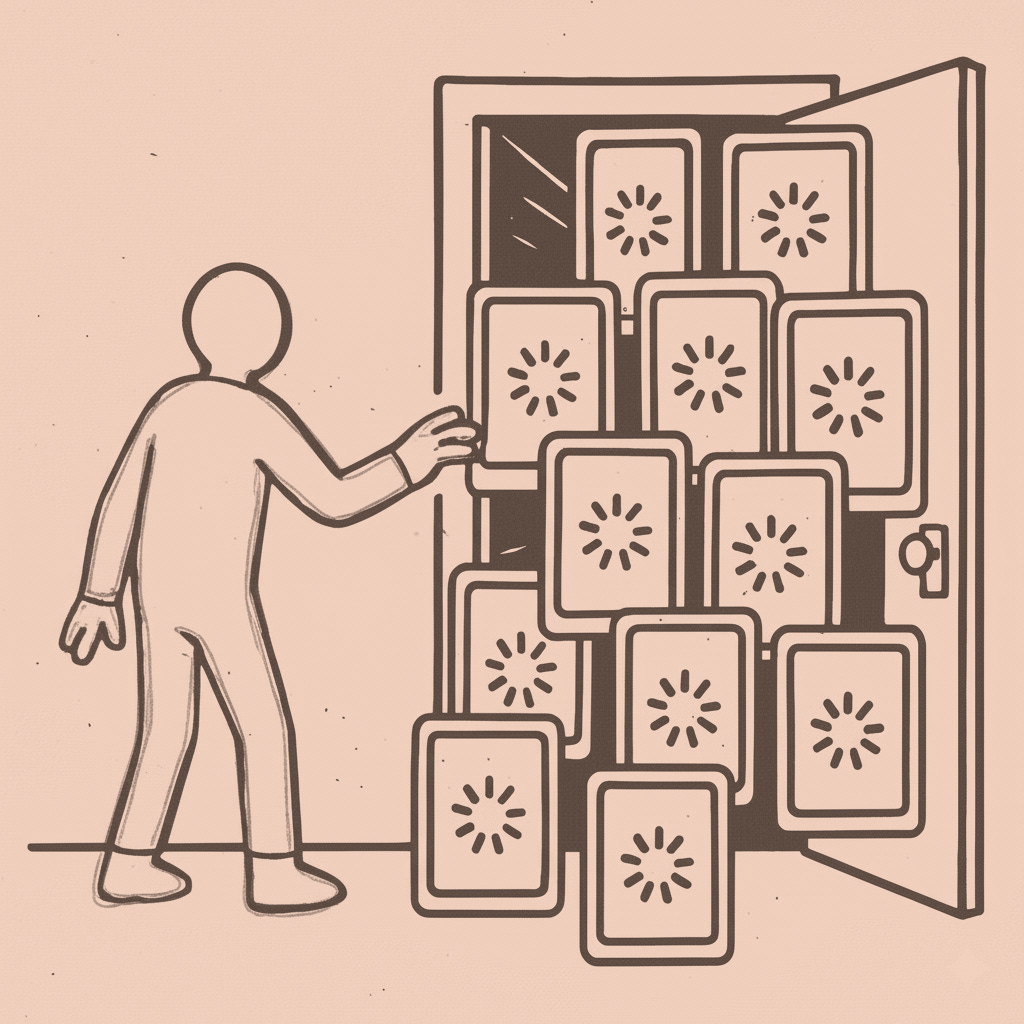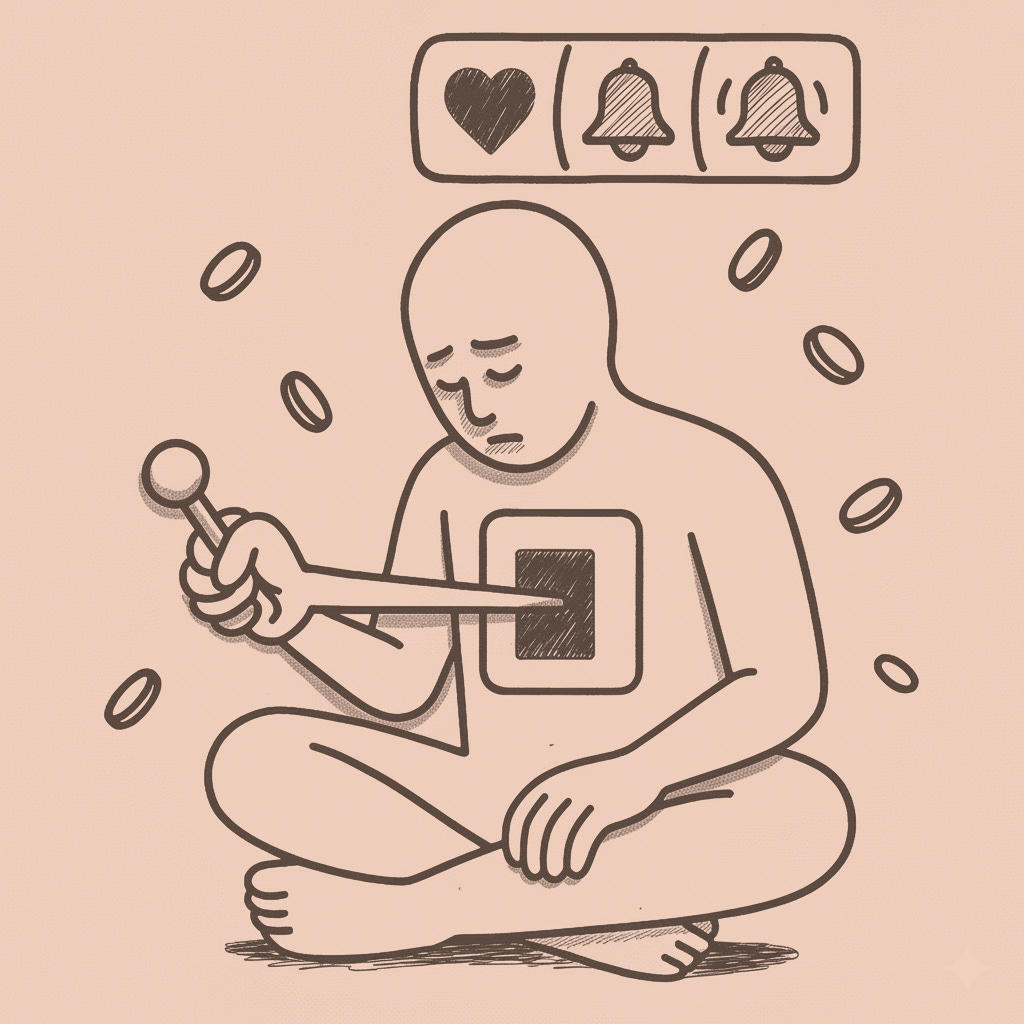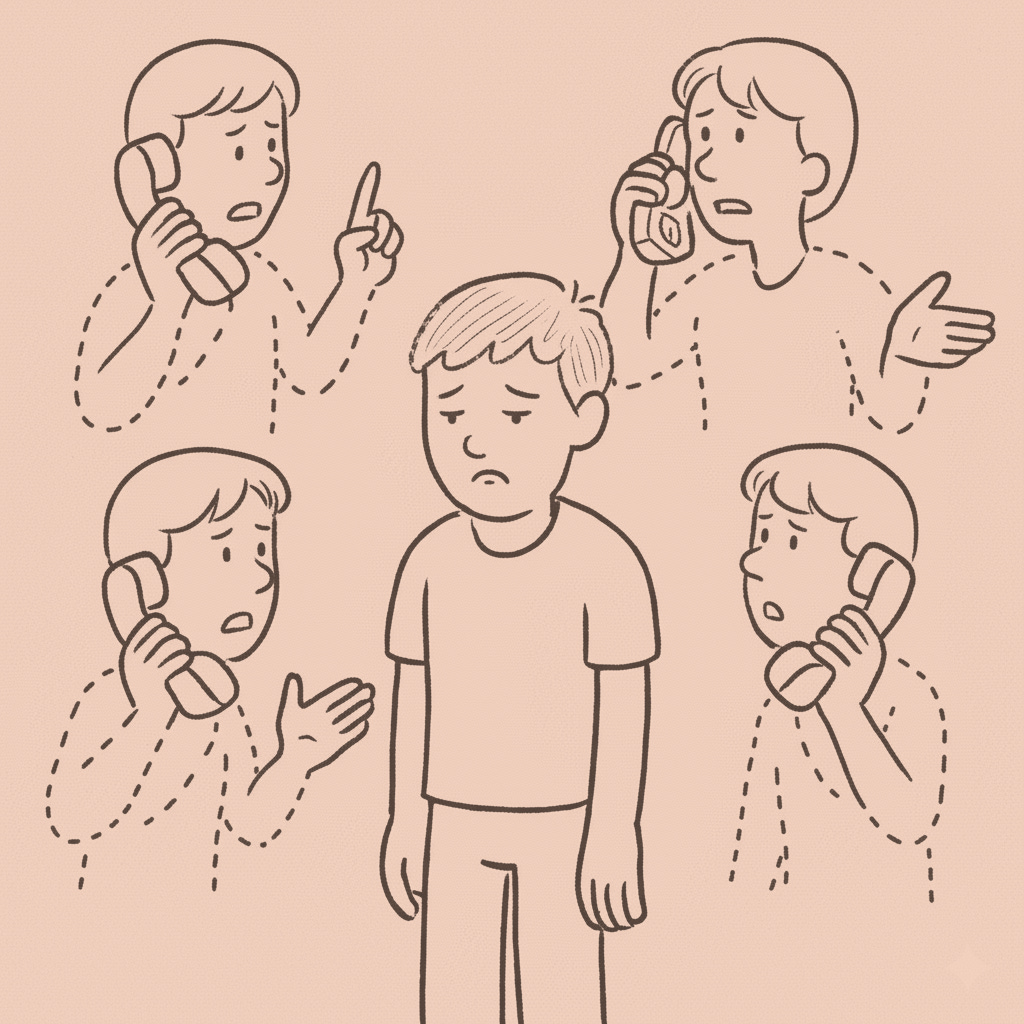You're Not Addicted, You're Subscribed
What platforms actually sell when they sell connection.
In 2019, I sat in a product meeting where we discussed increasing “time in app” by 2.3%. The number was specific because the projections were specific: each percentage point translated to roughly $40 million in annual revenue. Someone asked what users would actually get from spending more time with us. The room went quiet. Then someone else said, “That’s not really the question we’re optimizing for.”
That silence tells you more than any dashboard ever will.
When “dopamine culture” entered the vocabulary 18 months ago, the phrase went viral because it named something everyone already felt. Tech platforms as dealers, users as junkies, neurotransmitters as destiny. It’s a powerful frame. It’s also the wrong one for the world we actually live in. The observations are accurate: entertainment companies hemorrhage subscribers while TikTok prints money, most people in public spaces are physically present and mentally elsewhere, scan any café and you can count actual conversations on one hand with fingers left over. But calling it dopamine doesn’t explain anything. It names a mechanism without interrogating the system. Worse, it flattens humans into programmable reward circuits, which is precisely the anthropology that makes platforms powerful. Accept that story and you’ve already conceded the question of agency.
Here’s what we actually optimized for in those product meetings: not dopamine hits but the elimination of micro-moments of doubt. Every loading screen shaved by 200 milliseconds. Every step in the sharing flow removed. Every empty state that might cause you to ask “why am I here?” replaced with infinite scroll. We weren’t creating addiction. We were making hesitation impossible.
Inside the building, this had nicer names: “reduce cognitive overhead,” “collapse decision cost,” “meet users where they are.” That’s how you say “remove the last remaining no” without sounding like a comic-book villain at an all-hands.
The addiction frame does something worse than misdescribe the problem: it pathologizes our normal responses to engineered environments. You’re not weak for checking your phone. You’re responding rationally to a system tuned by teams who spent millions ensuring you’d respond that way. We hired psychologists to map the line between compulsion and habit. Habits don’t require willpower to resist. They just are. That was the goal: not something you love, but something you can’t imagine living without. But even habit doesn’t capture it. The question underneath is simpler and stranger: what are you actually reaching for when you reach for your phone?
One answer is obvious: you’re reaching for each other. The less obvious answer cuts deeper. You’re buying the possibility of being seen. In a world where establishing significance the old-fashioned way has become logistically expensive, platforms sell a cheaper surrogate. Call it Significance-as-a-Service. The pitch isn’t “more dopamine.” It’s: stay here and you might matter to someone, somewhere, soon. A like is a receipt for a tiny transaction in the attention economy. Five receipts in a row feels like progress.
The system creates the scarcity (loneliness, atomization, the sense that everyone else is having the conversation you’re not in) and then sells the fix in the form of notifications that confirm you still exist.
Crucially, the platforms didn’t win by being good. They won by being frictionless when everything else in life got harder. The alternative to scrolling isn’t a book club in a walkable neighborhood with childcare and a surplus of Tuesday energy. The alternative is nothing you can access in four taps wearing sweatpants at 11:47 p.m. We didn’t trick anyone. We just poured concrete over the exit ramps and called it accessibility.
If you want the part people won’t see until next spring, it’s this: the next growth frontier isn’t more content. It’s synthetic presence that fills the remaining gaps where friction still lives. Namely, other humans. This is already being built. Auto-Presence systems roll out widely next year: your apps will answer for you. Not just smart replies, but standing avatars that nod along in group chats, drop the right emoji, schedule the coffee you weren’t going to schedule anyway. You’ll be present in more places than you actually are.
Your social graph will register as vibrant while you cook dinner. The metric to watch is Response Half-Life: how quickly your network perceives a reply from “you,” human or not.
What product teams are calling Latency Laundering becomes a formal category. Delays that used to signal disinterest get smoothed by agents that draft, decide, and dispatch on your behalf. The machine absorbs your hesitation and returns enthusiasm at scale. People will describe feeling “more popular” without being able to say with whom. Synthetic Proximity metrics appear in dashboards to quantify how “near” you feel to others, with messages sent on your behalf counting toward the total. You’ll be encouraged to maintain a Proximity Score the way you once maintained Snapchat streaks. Low scores will correlate with professional penalties. Miss a thread, miss an opportunity. Opting out won’t feel like minimalism. It will read as unreliability.
Inside the building, teams are already working on what they’re calling Minimum Viable Intimacy. Features that pre-assemble micro-communities around life events (new city, new job, newborn) then backfill the human part with automation if the humans don’t show up. Loneliness gets treated like a utility: always on, billed monthly, outages refunded in credits. This is what frictionlessness becomes when it metastasizes. Not endless content but endless you, replicated and deployed to keep the network warm. The uncanny twist is that it will work. Your calendar will be fuller. Your inbox will be calmer. Your nights will be shorter and emptier in a way you won’t be able to name.
The harder truth hidden in all of this: we’re paying for convenience with the last natural brake on behavior. Awkwardness. Friction isn’t just a bug in social life. It’s how we decide what matters. Waiting, hesitating, risking a “no,” these are filters for meaning. Remove them and you don’t get freedom. You get a buffet where every dish tastes like sustenance because the texture is engineered and the satisfaction is algorithmic. Product teams call this “removing the cognitive tax” as if they’re the IRS of your attention. Growth plans reference “capturing under-monetized moments,” which is how you say “we noticed you still blink occasionally.” User research calls the last reflective pause before posting a drop-off. Legal calls it consent. Operations calls it an opportunity.
That’s why screen-time sermons land like after-school specials. “Just unplug” mistakes a civilization problem for an individual chore. It’s climate change meets “remember to recycle.” People don’t disconnect because the streams are their social world and the opt-out penalty is invisibility. Pay with your time or pay with your absence. Either way, you pay. If the diagnosis is right, digital detox is palliative care: useful but not curative. The lever that matters isn’t self-denial. It’s rebuilding shared venues where significance is earned with commitment, not simulated with automation. That sounds grand. It’s actually mundane and expensive: recurring dinners, third spaces that aren’t retail, childcare swaps, institutions that remember your name. Everything software is bad at funding and excellent at replacing.
What should unsettle you isn’t that your phone lights up your reward circuits. That’s table stakes. Be unsettled by how friction removal and significance-for-sale converge into a future where absence becomes suspicious and silence reads as failure. Your relationships will soon maintain a believable hum even when neither party is present, and that hum will count in the metrics that decide promotions and invitations. The more the system supplies you in your stead, the less practice you’ll have at the social labor that makes real connection: risking misread tone, accepting awkward lulls, staying long enough to earn trust. We will grow exquisitely connected and increasingly unable to relate. The infrastructure of human connection, already privatized, will formalize what might as well be called a Presence Tax. Pay with data, attention, or cash to keep your avatar helpful while you sleep. The tax will feel optional for a while. Then it won’t.
What we told ourselves in those meetings was that we were ‘meeting users where they are.’ The accurate version is less flattering: we removed the barriers between you and what you already wanted. The wanting was always yours. We just made it frictionless. The platforms win because they offer you a mirror that responds. Soon, the mirror will answer for you. You’ll feel seen in more places than you are and lonelier in a way that doesn’t announce itself. If you’re looking for a clean moral, there isn’t one. There is only a choice about where to re-introduce friction on purpose. Where to keep the pauses that make meaning possible.
That is the future-tense question, and it’s uncomfortably specific: Which parts of your life will you allow to be effortless, and which parts will you keep hard on purpose? If we can’t name what must remain difficult, the default will name it for us. And it will be very, very helpful while it does. Until the day we discover we’ve forgotten how to do difficult at all.



